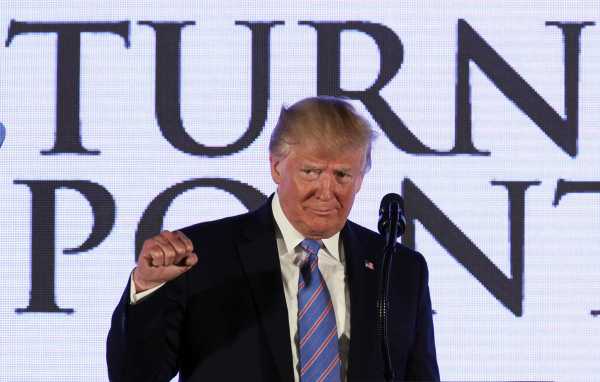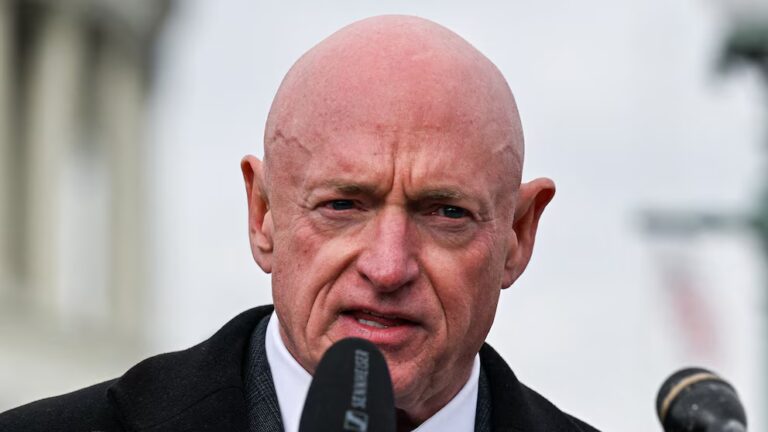
You probably remember that Donald Trump won Wisconsin, Michigan, and Pennsylvania in 2016. Somewhat lost to history — but not to Trump himself — is the fact that he almost won in deep blue Minnesota as well.
Trump insisted repeatedly on Tuesday that he’ll win Minnesota in 2020, first with a tweet posted in the morning in which he smeared Rep. Ilhan Omar as “America hating.” (Omar is a Somali refugee and one of the first Muslim women in Congress, and also one of the four progressive congresswomen with whom he’s been feuding since he posted loaded tweets asking them to “go back” to other countries.) Trump went on to offer some hyperbole about the state of the economy:
Trump did come within 1.5 percentage points of overcoming some impressive headwinds in Minnesota in 2016. A Republican hasn’t won a statewide race there since 2006. A presidential candidate from the party hasn’t carried the state since Richard Nixon in 1972. Yet Trump, who trailed Hillary Clinton by 11 points in one major poll taken in October 2016, nearly got it done.
Almost two years later, Trump’s popularity in Minnesota has seemingly sagged. Morning Consult currently pegs his net approval rating as 16 points underwater in the state — a stark change from January 2017, when his net approval rating in Minnesota was three points positive. In 2018’s midterm cycle, Minnesota Republicans didn’t fare as poorly as, say, Republicans in California did, but they still lost two US senate races, a gubernatorial race, and control of the state House — all by large margins.
But 10 days deep into his feud with Omar, Trump sees an opportunity.
Speaking to Turning Point USA a few hours after his Tuesday morning tweet, Trump claimed that he would’ve won Minnesota in 2016 had he done one more rally there.
“Your other friend from an incredible state, right, state that I’m going to win — Minnesota,” Trump said, alluding to Omar. “And you know what I’m going to win the state? Because of her. I almost won it last time. We came [within] just about a point. Minnesota is very hard work for a Republican to win. We almost won it — one more night. I wanted to go there one more time. I said, ‘I’m telling you, we’re gong to win Minnesota.’”
It’s arguably true that Trump could’ve won Minnesota with one more rally. During a conversation with Vox, Lawrence Jacobs, director of the Center for the Study of Politics and Governance in the Hubert H. Humphrey School at the University of Minnesota, noted that Trump “came very close with little effort” and surged after he held one of his final campaign rallies in an airport hangar in the suburban Twin Cities.
Between that above-average performance in the blue state in 2016 and today’s bullish economy, it’s not absurd for Trump to think he could swing the state in 2020. But there are also good reasons to believe that whatever window Trump had to score an unlikely victory in Minnesota in 2016 has closed.
Race-baiting doesn’t play particularly well in Minnesota
Trump views his attacks on Omar and other Democratic women of color as a way to motivate white voters to get out and vote.
This isn’t a new strategy for him; ahead of last November’s midterms, for instance, Trump leaned heavily into stoking fears about migrant caravans “invading” the country across the southern border. And during stops in Minnesota, Trump has stoked nativist concerns Minnesota Trump supporters have about the large Somali community of which Omar is a part.
“I think you have been treated extremely unfairly in the world of immigration,” Trump said during a speech in Minnesota in April.
But the recent midterm elections indicated this sort of messaging doesn’t resonate particularly well in the Land of 10,000 Lakes, at least in state’s largest metro region of the Twin Cities.
Republicans who embraced Trump did flip two mostly rural Minnesota congressional districts from red to blue in 2018 — Jim Hagedorn in the First, which is in southern Minnesota, and Pete Stauber in the Eighth, which extends from the northern Twin Cities exurbs north to the Canadian border in the eastern part of the state. But Democrats picked up two suburban seats formerly held by Republicans — Jason Lewis and Erik Paulsen — following campaigns in which their opponents saddled them with Trump’s baggage.
Even though Trump held a rally in southern Minnesota about a month before Election Day, the robust margins of victory enjoyed by Democrats in statewide races indicate that Trump’s popularity in the state really has taken a hit since 2016. Sens. Amy Klobuchar and Tina Smith won their races by 24 and 9 points, respectively, and Gov. Tim Walz defeated his Republican opponent by 12 points.
Trump’s unpopularity in the Twin Cities was captured nicely in an excerpt from Tim Alberta’s new book about how Trump endorsed Paulsen to spite him. Trump seemed fully aware of how unpopular he is in the district Paulsen represented in the western Minneapolis suburbs before Dean Phillips defeated Paulsen:
Trump’s racist attacks on Omar and other congresswomen of color actually boosted his approval ratings among Republicans nationally, but Kathryn Pearson, a political scientist at the University of Minnesota, doesn’t think they play well especially well locally.
“Trump’s attacks on [Omar] have solidified support around her both in her own district and in Minnesota, and I don’t think this strategy is playing well in Minnesota, even among Republicans,” Pearson told Vox.
The strong economy will help Trump, but maybe not enough
As is the case in much of the country, Minnesota’s economy is humming along. The unemployment rate in the state is currently 3.3 percent, even lower than the national rate of 3.7 percent. Over the next two years, the state government is expected to enjoy a projected a $1 billion budget surplus.
These factors no doubt help Trump. Pearson noted that “political science research indicates that a strong economy helps the incumbent president.” Trump is fully aware that’ll be a factor working in his favor next year in Minnesota and elsewhere, assuming the country doesn’t hit a major downturn between now and next November.
But 2018 also suggested that a strong economy won’t be enough to make up for Trump’s relative lack of popularity in the state — a dynamic that’s been evident since Marco Rubio won the Republican primary election there in March 2016.
Minnesota’s unemployment rate has ticked up a bit since late last year, when it was around 3 percent. But a low employment rate wasn’t enough to save Republicans during the midterm elections.
Jacobs, however, cautioned against reading too much into midterm results.
“Midterm elections are not predictive of presidential elections, and there’s a very different dynamic to them,” he said. “I would not rest on the 2018 results in the suburbs as a reliable indicator of what’s going to happen in 2020.”
Pearson also wouldn’t rule out a Trump victory.
“It would be a pretty dramatic stretch for Trump to win Minnesota, but it’s not entirely out of the question,” she said.
It’s worth noting that Trump is insisting he’ll win Minnesota at the same time his bad approval numbers are drawing into question whether he’ll be able to hold any of the Midwestern states he won in 2020. In that context, his claims about winning Minnesota may just be meant to give his supporters a ray of hope that the situation isn’t as it may seem.
So while Trump’s approval rating may currently be 16 points underwater in Minnesota, it’s worth remembering that polls had him trailing Clinton by double figures just weeks before the 2016 election. Stranger things have happened than Trump on his second go-round becoming the first Republican since Nixon to carry Minnesota, even if Democrats are unlikely to take the state for granted this time around.
The news moves fast. To stay updated, follow Aaron Rupar on Twitter, and read more of Vox’s policy and politics coverage.
Sourse: vox.com






